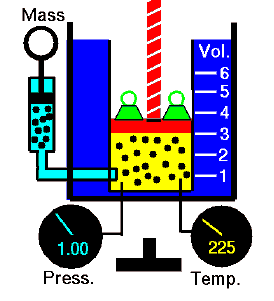Guy-Lussac’s Law
Guy-Lussac’s Law or the Pressure Law is one of the gas laws. In the late 18th and early 19th centuries, it was discovered by French chemist Joseph Louis Gay-Lussac. He studied the relationship between the pressure and the temperature of a gas at constant volume. The results of certain experiments with gases at relatively low pressure led Joseph Louis Gay-Lussac to formulate a well-known “Pressure Law”. It states that:
For a fixed mass of gas at constant volume, the pressure is directly proportional to the Kelvin temperature.
That means that, for example, if you double the temperature, you will double the pressure. If you halve the temperature, you will halve the pressure.
You can express this mathematically as:
p = constant . T
Yes, it seems to be identical as isochoric process of ideal gas. These results are fully consistent with ideal gas law, which determinates, that the constant is equal to nR/V. If you rearrange the pV = nRT equation by dividing both sides by V, you will obtain:
p = nR/V . T
where nR/V is constant and:
- p is the absolute pressure of the gas
- n is the amount of substance
- T is the absolute temperature
- V is the volume
- R is the ideal, or universal, gas constant, equal to the product of the Boltzmann constant and the Avogadro constant,
In this equation the symbol R is a constant called the universal gas constant that has the same value for all gases—namely, R = 8.31 J/mol K.
We hope, this article, Guy-Lussac’s Law, helps you. If so, give us a like in the sidebar. Main purpose of this website is to help the public to learn some interesting and important information about thermal engineering.
